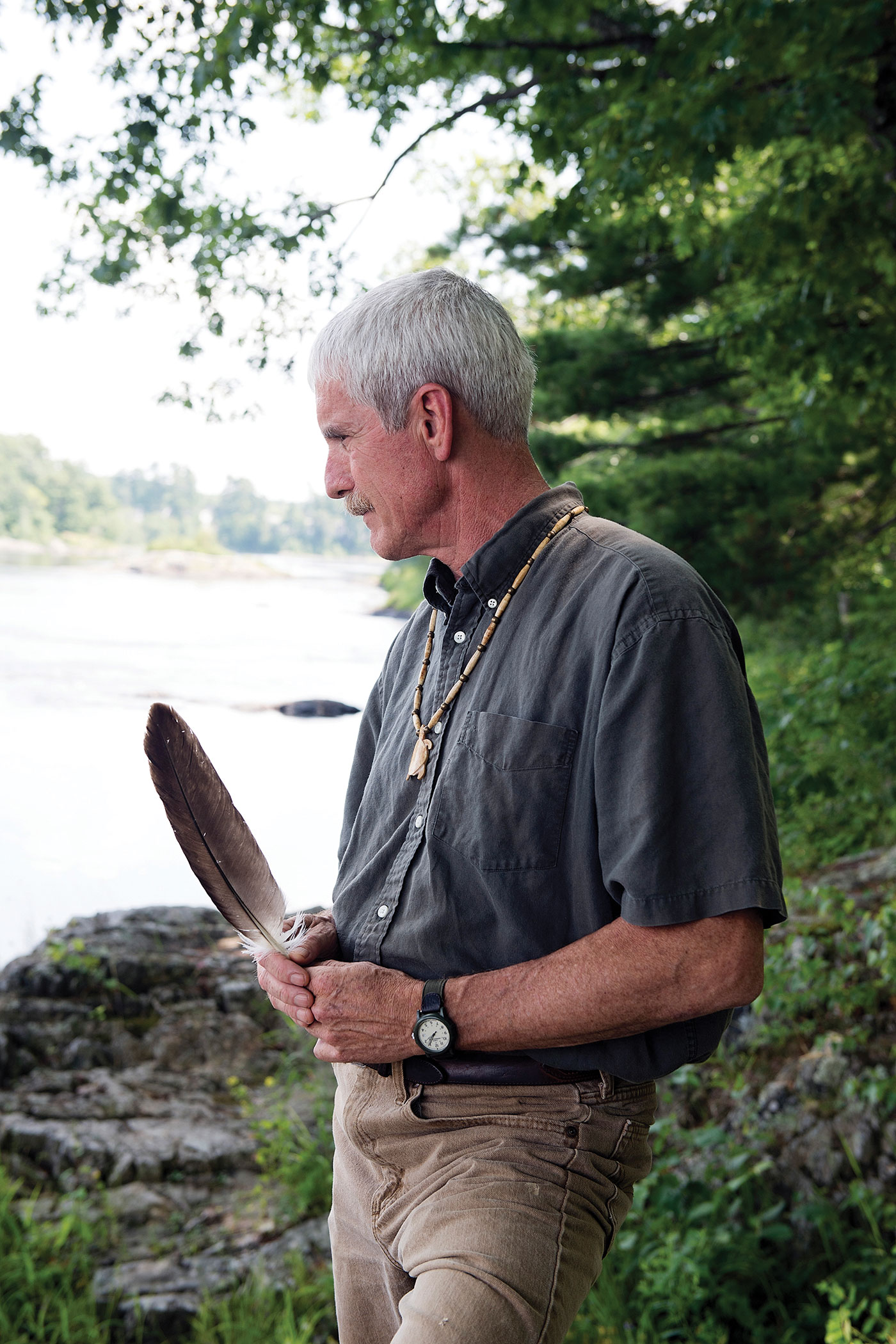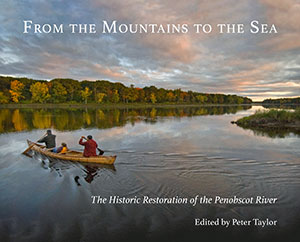John Banks is Director of the Department of Natural Resources for the Penobscot Indian Nation, a key partner in the Penobscot River Restoration Project. A new book detailing the Penobscot project was recently published by Islandport Press. I invited John to share his perspective about the project as well as the book.—Allison Wells

John Banks. Photo by Nicole Wolf
Allison Wells: You were a key member of the team that helped see the book, From the Mountains to the Sea: the Historic Restoration of the Penobscot River to publication. Why is this book necessary?
John Banks: I think a lot of the folks that were involved in the project wanted to tell the story from the perspective of those of us that were directly involved. The process of getting to “yes” had many behind the scenes issues, discussions, and decisions that we didn’t want to get lost.
AW: The book does a great job of capturing that, providing tremendous insight into the process. What does the completion of the project mean to you and the Penobscot Nation?
JB: So much of the history of the Wabanaki Tribes has been written, and rewritten, without any consultation with the tribes, resulting in an incomplete narrative of our past. As a tribal person, it was very nice to have a voice in the creation of the story as it truly happened. It provided an opportunity to make sure that the tribal perspective was included appropriately.
AW: I know your voice and perspective were incredibly important and well respected throughout the river restoration work as well as the book project. Do you think the book did a good job capturing the challenges and rewards of working on a project that had so many different stakeholders?
JB: Working alongside so many great partners that shared the vision of a restored Penobscot River was certainly a rewarding experience for me. I think the book tells a great story of what can be
accomplished when people from diverse backgrounds decide to work together for a common purpose.
AW: Is there a favorite line or section for you in the book?
JB: It’s hard to name a favorite part of the book because there are so many! I do like the many references to the involvement of the Penobscot Nation, tribal employees, and our citizens. I love the photo of Joe “Hugga” Dana in the bark canoe at the Veazie Dam removal celebration in 2013. I had no idea he was going to do that so it was a pleasant surprise!
AW: That is a great image. I remember watching from the banks of the river as it happened in real time and being very moved by it. What are a few of the take-aways you hope readers of the book will experience?
JB: I think an important aspect of the Penobscot project is the nature of the partnership and how we all came together to accomplish what seemed like, at the time, a very rough road ahead. I think a key take-away from the book would be to understand that perseverance with collaboration can accomplish great things. We do not have to be satisfied with the status quo. I like [PRRP Community Outreach Coordinator] Cheryl Daigle’s words about being respectful, listening well, and being sincere: ”Thoughtfulness is as important as being strategic.” It truly was a trust-building experience and necessary in this case.
AW: Those are indeed words of wisdom and something we can all take to heart. What’s next for you, the river, and the Penobscot Nation?
JB: The Penobscot Nation will continue to uphold our inherit stewardship responsibilities for the health of the watershed for the benefit of future generations.
AW: Thank you, John, for this interview, and for all your work protecting the Penobscot River and Maine’s environment!

From the Mountains to the Sea: the Historic Restoration of the Penobscot River by Peter Taylor (Islandport Press, 2020) June 14, 2016, marked a monumental day in Maine history: For the first time in two centuries, an Atlantic salmon swam up the river through Howland. It was headed to ancestral spawning grounds that had been closed to this species and other native Maine sea-run fish for generations. As hundreds of people cheered from the riverbank, it may have been easy to forget that this celebratory occasion represented 16 years of incredible effort among diverse—and unlikely—allies. From the Mountains to the Sea is a page-turner, sharing insider perspectives (more than 50 participants) who describe what it was like to navigate local politics and federal budgets. The book describes challenges, compromises, and pivotal points that ultimately led to the balance of social and economic values, serving as a global model for large-scale river habitat restoration. Features fantastic photographs, including beautiful wildlife photos by NRCM members. —AW
“A beautifully designed book, with its useful sidebars, snappy pull quotes and stunning photographs of the river and its wildlife…Wonderful in its nuanced, step-by-step portrayal of how rugged it can get when engineers and ecologists take the measure of each other.” —Wall Street Journal









